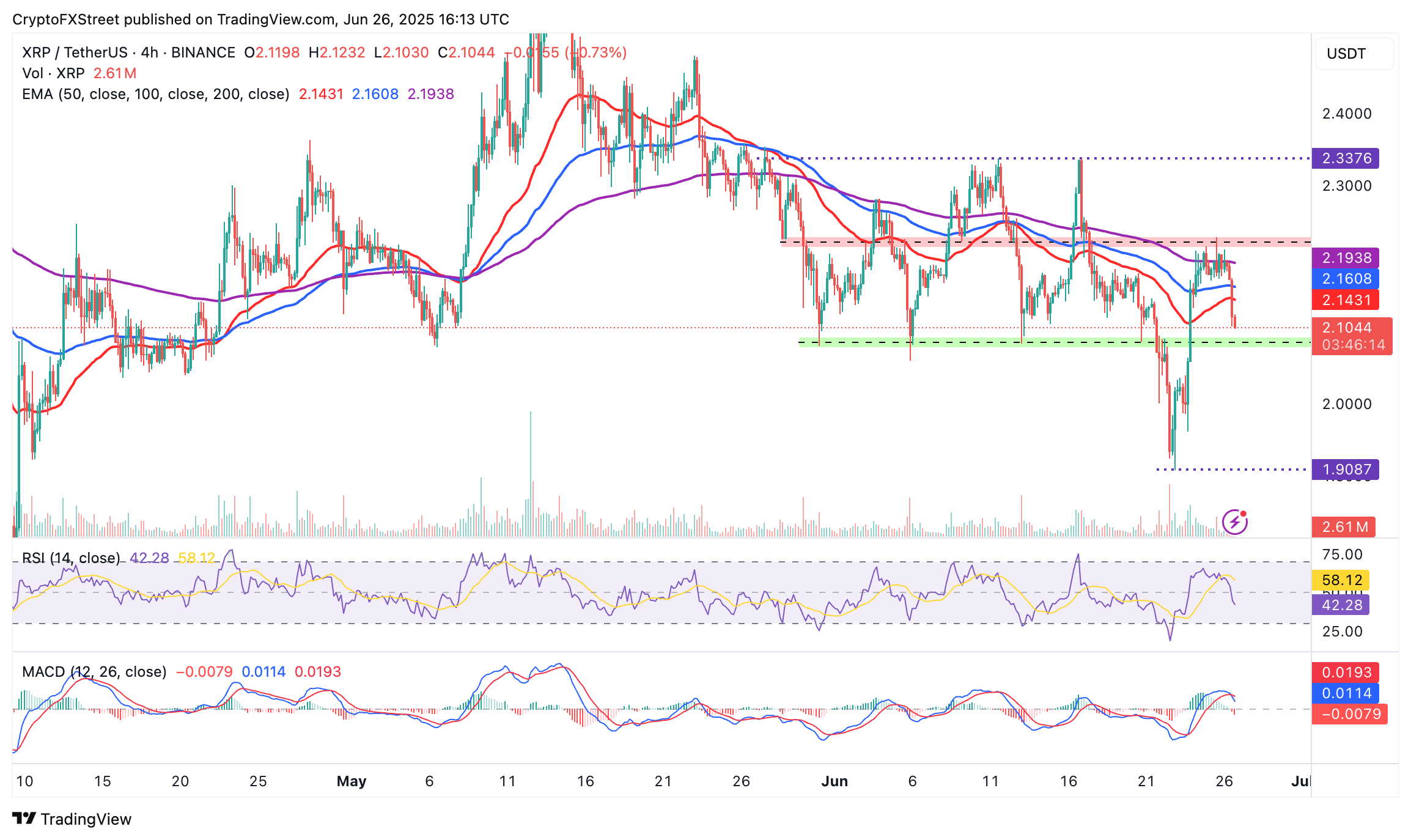Ripple Price Forecast: XRP/BTC pair falls to 7-month low, but falling wedge hints at imminent breakout
- XRP recovery snaps, triggering fresh intraday losses targeting short-term support at $2.09.
- The XRP/BTC pair has extended its downtrend by nearly 42% from its January peak, trading around 0.00003415.
- A falling wedge pattern on the daily chart suggests a potential breakout, with an XRP price rally in the offing.
Ripple (XRP) is facing growing selling pressure amid broader market uncertainties, driven by geopolitical tensions and macroeconomic factors. After a sharp but brief run from the weekend low of $1.90, the token is trading at around $2.14 at the time of writing on Thursday. This technical weakness corresponds to a significant decline in the XRP/BTC trading pair, which has been hovering at around 0.00001982 after peaking at 0.000034 in January.
XRP/BTC pair tumbles amid macroeconomic uncertainty
The XRP/BTC pair is offering bearish signals, sliding to 0.00001982 on the daily chart below amid concerns about the independence of the United States (US) Federal Reserve (Fed).
President Donald Trump reiterated his criticism of Fed Chair Jerome Powell during the NATO summit, stating that he looks forward to his replacement. As reported, the US Dollar Index (DXY) edged lower on Thursday, prompting investors to seek protection in select digital assets such as Bitcoin (BTC) and Ethereum (ETH).
The XRP/BTC pair shows signs of further weakening, especially with the Relative Strength Index (RSI) falling to 37 and approaching oversold territory.
A death cross pattern formed when the 50-day Exponential Moving Average (EMA) crossed below the 200-day EMA on June 12, confirming a firm bearish grip. Traders could anticipate a rebound from the support level tested at 0.00001900 on Sunday.

XRP/BTC daily chart
Still, bearish expectations should be tempered, particularly due to the presence of a falling wedge pattern on the daily chart. This is a bullish pattern established when the pair consolidates between two converging trendlines, indicating a potential reversal of the downward trend.
Key indicators of the pattern include a reduction in volume and a narrowing range, which signal that selling pressure is waning and buyers are gaining control. Traders would expect a breakout above the upper trendline. An increase in trading volume can validate the pattern, ensuring traders avoid false breakouts.
The XRP/BTC pair is expected to move nearly 29% following the breakout. This target is determined by measuring the height of the pattern at its widest points and extrapolating above the breakout point to 0.00002560.
Such a move in the XRP/BTC pair has the potential to ignite a major rally in the price of XRP, reflecting the surge in November, December and January when the cross-border money transfer token reached $0.34.
Technical outlook: Is an XRP rally in the offing?
XRP’s price is falling toward support at around $2.09 following a rejection from its weekly top at approximately $2.22. A sell signal confirmed by the Moving Average Convergence Divergence (MACD) indicator on Thursday on the 4-hour chart indicates that sellers have the upper hand.
When the blue MACD line crosses below the red signal line, as the indicator drops toward the zero line, a risk-off sentiment often dominates, adding to the overhead pressure.
The position of the Relative Strength Index (RSI) below the midline suggests that selling pressure is gaining momentum. Should XRP fail to reverse the upward trend, the RSI will approach the oversold region, indicating bearish momentum.

XRP/USDT 4-hour chart
A reversal from the tentative support at $2.09 depends on sentiment in the broader crypto market. However, a flash drop below the $2.00 round-figure support cannot be ruled out just yet. This could be a key reason to have support at $1.90, last tested on Sunday and April’s downside levels at $1.80 and $1.60 in mind going forward.
Cryptocurrency prices FAQs
Token launches influence demand and adoption among market participants. Listings on crypto exchanges deepen the liquidity for an asset and add new participants to an asset’s network. This is typically bullish for a digital asset.
A hack is an event in which an attacker captures a large volume of the asset from a DeFi bridge or hot wallet of an exchange or any other crypto platform via exploits, bugs or other methods. The exploiter then transfers these tokens out of the exchange platforms to ultimately sell or swap the assets for other cryptocurrencies or stablecoins. Such events often involve an en masse panic triggering a sell-off in the affected assets.
Macroeconomic events like the US Federal Reserve’s decision on interest rates influence crypto assets mainly through the direct impact they have on the US Dollar. An increase in interest rate typically negatively influences Bitcoin and altcoin prices, and vice versa. If the US Dollar index declines, risk assets and associated leverage for trading gets cheaper, in turn driving crypto prices higher.
Halvings are typically considered bullish events as they slash the block reward in half for miners, constricting the supply of the asset. At consistent demand if the supply reduces, the asset’s price climbs.

